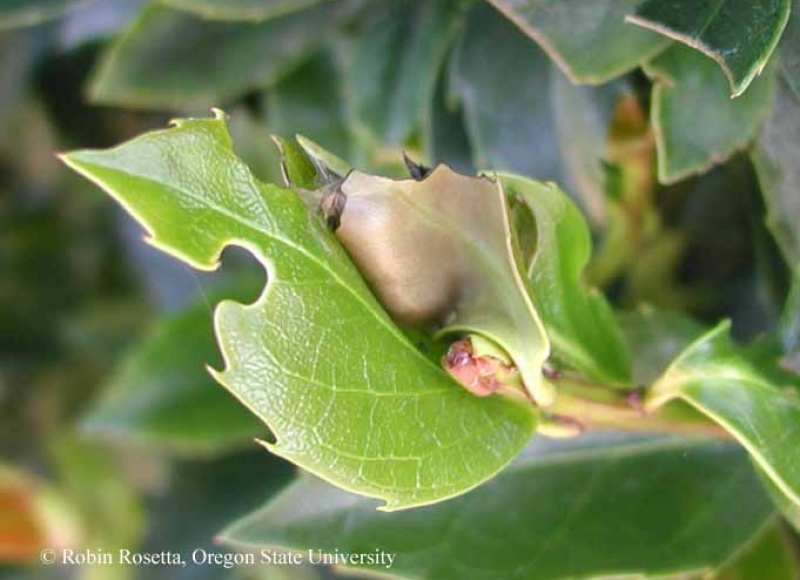The holly bud moth, Rhopobota naevana (Hbn.) Kearfott, is a key pest in holly production and landscapes. It is also known as the blackheaded fireworm in cranberry production. It was introduced into the British Colombia in 1923 and has expanded its territory into Washington and Oregon and other areas of the country.
This insect overwinters as eggs which hatch in spring at which time the new caterpillars feed on buds. Older caterpillars feed on leaves, first webbing them together. The feeding damage includes rolled leaves, holes, and blackened tissue, including tip dieback. The caterpillars generally pupate in leaves on the soil although pupae can be found on occasion within the rolled leaves while on the plant. The moth generally emerges in June and then lays eggs on the leaf underside. There are two generations a year. Other hosts include apple, blueberry, cherry, Crataegus, Fraxinus, Ilex, Prunus, Pyrus, Sorbus, Spiraea, Syringa, and Vaccinium.
One cultural control for this pest is to collect and dispose of the fallen leaves to reduce successful emergence from the pupae.
Useful links:
Maurice et al. 2000. Integrated Pest Management Guide for Cranberries in Western Canada. British Columbia Cranberry Growers Association.: Blackheaded fireworm, Rhopobota naevana (Hubner)- Great information about this insect (page 18) as a pest on another economic host, cranberries. Useful information on monitoring and control.
North Carolina Pest News: Holly bud moth
UK Moths: Holly tortrix. Nice image of the moth.
Page last modified 5/21/12









